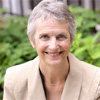It’s a statement of purpose. It’s a road map towards Dal’s 200th anniversary. And it’s an outline of how Dal intends to advance its core mission in the months and years ahead, with the goal of taking its place among the top universities in Canada and in the world.
It’s called — the university’s new set of strategic priorities, approved by both Senate and the Board of Governors in the late spring.
The document reflects more than a year’s worth of work that stretches back to the 100 Days of Listening. It was around this time last year that the Dal community was winding down that series of consultations and data collecting that kicked off President Richard Florizone’s first year in office. outlined a series of “emerging priorities” — areas of emphasis that, in the winter term, were debated and workshopped by the university’s academic governing bodies (Faculty councils, Senate committees, etc.)
What came forth from these discussions was the Strategic Direction, which includes revamped vision and mission statements for the university and 25 strategic priorities, organized under five broad themes:
- Enhance the transformative power of teaching and learning
- Expand opportunities for research, scholarly and artistic work
- Catalyze the intellectual, social and economic development of our communities
- Take our place nationally and internationally
- Build our institutional capacities
Now, momentum is gathering around the development of project charters for each of the priorities, beginning with an initial 10 charters that cover areas such as retention and degree completion; supporting Dal’s priority research areas; creativity, innovation and entrepreneurship; and more.
To get a better sense of the genesis of Inspiration and Impact, and about what it will mean for Dal in the weeks and months ahead, we sat down for a feature interview with President Richard Florizone and Provost Carolyn Watters to discuss the document in more detail.
��
- [PDF-7.8MB]
- [PDF-7.2MB]
This interview has been abridged for length.
Why does a university need a document like this? What purpose does it serve?
 Dr. Florizone: First and foremost, it’s to guide our collective action. During 100 Days we heard from thousands of people about issues, opportunities, concerns, directions for Dal to consider. We collected lots of data, and considered the external environment and those issues we face. And so the question becomes, once we’ve done all that, how do we act upon it? You synthesize it down into a set of directions that administration, faculty, staff and students — with the support of government, donors and other partners — can move forward on. And that’s what we spent much of the winter term and late spring focused on.
Dr. Florizone: First and foremost, it’s to guide our collective action. During 100 Days we heard from thousands of people about issues, opportunities, concerns, directions for Dal to consider. We collected lots of data, and considered the external environment and those issues we face. And so the question becomes, once we’ve done all that, how do we act upon it? You synthesize it down into a set of directions that administration, faculty, staff and students — with the support of government, donors and other partners — can move forward on. And that’s what we spent much of the winter term and late spring focused on.
Another purpose it serves is around transparency and accountability, which sound like buzzwords but I really feel they are fundamental principles in any effective organization, public or private. Transparency means people from outside the university can see what we’re focused on: it’s an expression about what we want to accomplish together as a community. Also, with accountability, if you want to assess how we’re doing towards what we’ve agreed are our priorities, this document provides that framework.
 Dr. Watters: It’s also about buy-in. Developing this document has been a collective activity: starting with 100 Days and then by working closely with stakeholders across the university to listen, to write, to distill out these key themes and priorities. So now, as we turn our spotlight to these issues and opportunities, we get to go back to that community and talk about how we take action on them. I met with the DSU Council last month and they appreciated getting to talk through the document and explore how its themes link back to issues they raised throughout the various consultations over the past year. It’s about taking ownership and responsibility — we don’t want this to be a document that people look at once and place on the shelf. It’s a plan for action, for getting involved.����
Dr. Watters: It’s also about buy-in. Developing this document has been a collective activity: starting with 100 Days and then by working closely with stakeholders across the university to listen, to write, to distill out these key themes and priorities. So now, as we turn our spotlight to these issues and opportunities, we get to go back to that community and talk about how we take action on them. I met with the DSU Council last month and they appreciated getting to talk through the document and explore how its themes link back to issues they raised throughout the various consultations over the past year. It’s about taking ownership and responsibility — we don’t want this to be a document that people look at once and place on the shelf. It’s a plan for action, for getting involved.����
Tell me more about how the 100 Days of Listening shaped Inspiration and Impact, and how you leveraged that momentum to come to these as the university’s priorities.
Dr. Flozione: 100 Days was a structured program of consultations, both in person and written online, with data collection happening in parallel. It was very much a broad funnel of information that we then had to synthesize down into something concise, which was the 100 Days’ “emerging priorities.” But you can’t stop there: the winter semester was really us saying, “This is what we heard, this is what we think it means, let’s distill this down to a set of issues we can advance together.”
Dr. Watters: If you look at those emerging priorities [from 100 Days], you’ll see a lot of the same topics and issues that are now in the Strategic Direction but they were shaped, reworked and added to as we continued to consult with the Dal community. That second phase of consultation after 100 Days was largely focused on input and buy-in from our academic community: Faculty councils, Senate subcommittees, Senate as a whole. We wanted to be as inclusive as possible, so that everyone felt like this was their document. So it went from a broad process like 100 Days, to a very focused one-page set of emerging priorities and then, through consultation, out to the 25 total priorities you see now.
Dr. Florizone: I’ve said before that good strategy has to be both bottom-up and top-down. You have to consult broadly with your community because, if you don’t — if you just “check the box” of consultation — you miss the opportunity to really understand the issues, to find the real insights. But then you have to synthesize it from the top, distill those thousands of things you heard back to the community in such a way that everyone can appreciate and understand them. Then, it goes back to bottom-up as people across the organization start bringing those ideas to life. That’s very much where we are now: we’ve distilled what we’ve heard, we’ve shaped these priorities with our community, and now we turn our attention towards action.
Ten of the 25 projects are getting underway first, with Dal’s vice-presidents overseeing the development of project charters that will outline the scope of work for each. How were these 10 selected?
Dr. Florizone: I think of the Chinese proverb, “The journey of a thousand miles begins with a single step.” How do we move towards action? Is it by lighting 25 fires at once? We decided it was best to focus on 10 to start, all in areas where we felt we could have the biggest impact in the shortest period of time. Some of these were projects where work was already underway — like student retention — and there are others informed by external factors, such as supporting our priority research areas. That one is really being fuelled by the timeline for the Government of Canada’s new Canada First Research Excellence Fund.
Dr. Watters: All of the projects are moving forward, but some are moving faster, or earlier. Student retention is a good example: it had some built-in momentum, as we were looking at putting a team together and hiring an external consultant, so it made sense to get underway more quickly. Ultimately, this is a four-year plan, so I look at it like a university degree: you don’t sign up for all four years’ of courses on day one. It doesn’t mean the first-year courses are more important than the fourth-year ones; it just means you have to start somewhere.
Read also:
Dr. Florizone: I’ve been encouraged by the community’s response. We chose the initial 10 thinking we didn’t want to overwhelm people by starting everything all at once. And what we’re hearing is, “Hey, we want to get going too!” That’s great: I’m thrilled people want to move on all of them. It’s just a question of what we can get to first. We expect all of them to be underway, in some capacity, by the end of this academic year, and that all of them will be meeting goals by the end of the 2018 period. ��
So what can the Dal community expect from the process of implementing Inspiration and Impact in the coming weeks and months?
Dr. Florizone: There’s a lot of activity getting underway this semester and into next. Each of the first set of priorities has a vice-president assigned to it, but that vice-president will be recruiting a team of faculty, staff and/or students, depending on the project and its needs.
Dr. Watters: What we’re hoping is when people get asked to help that they’ll sign up. If we’re going to advance our mission and achieve our goals as a university, we’ll need to work together, roll up our sleeves and contribute our ideas and energy to these projects. People should for details on the projects in the coming weeks and if they see an area where they think they can contribute, they should contact the project lead.
By the end of this year we’ll be publishing full charters for each of the initial 10 projects, outlining the high-level goals for each as well as identifying who will be involved in leading them. Then we’ll be developing an annual reporting process, through Senate, so we can track how well we’re doing towards our goals.
Dr. Florizone: This is a document that, we hope, our community sees their issues, their opportunities in. Now, as we turn to action, we hope they can also see a role for themselves in its implementation.
Learn more about Inspiration and Impact, and how it will be implemented, at .

